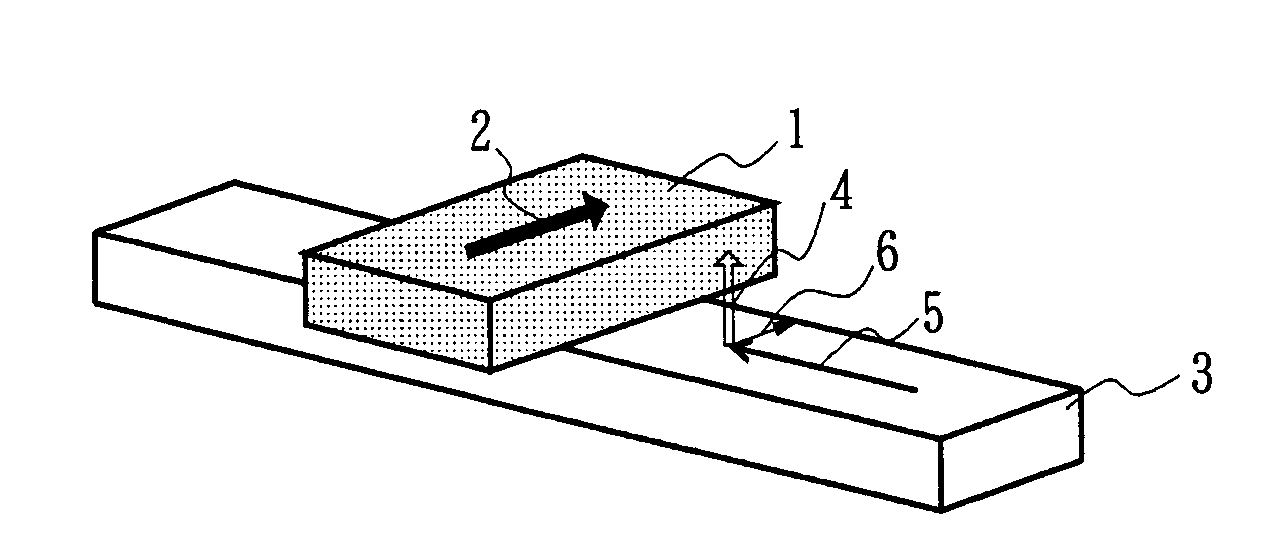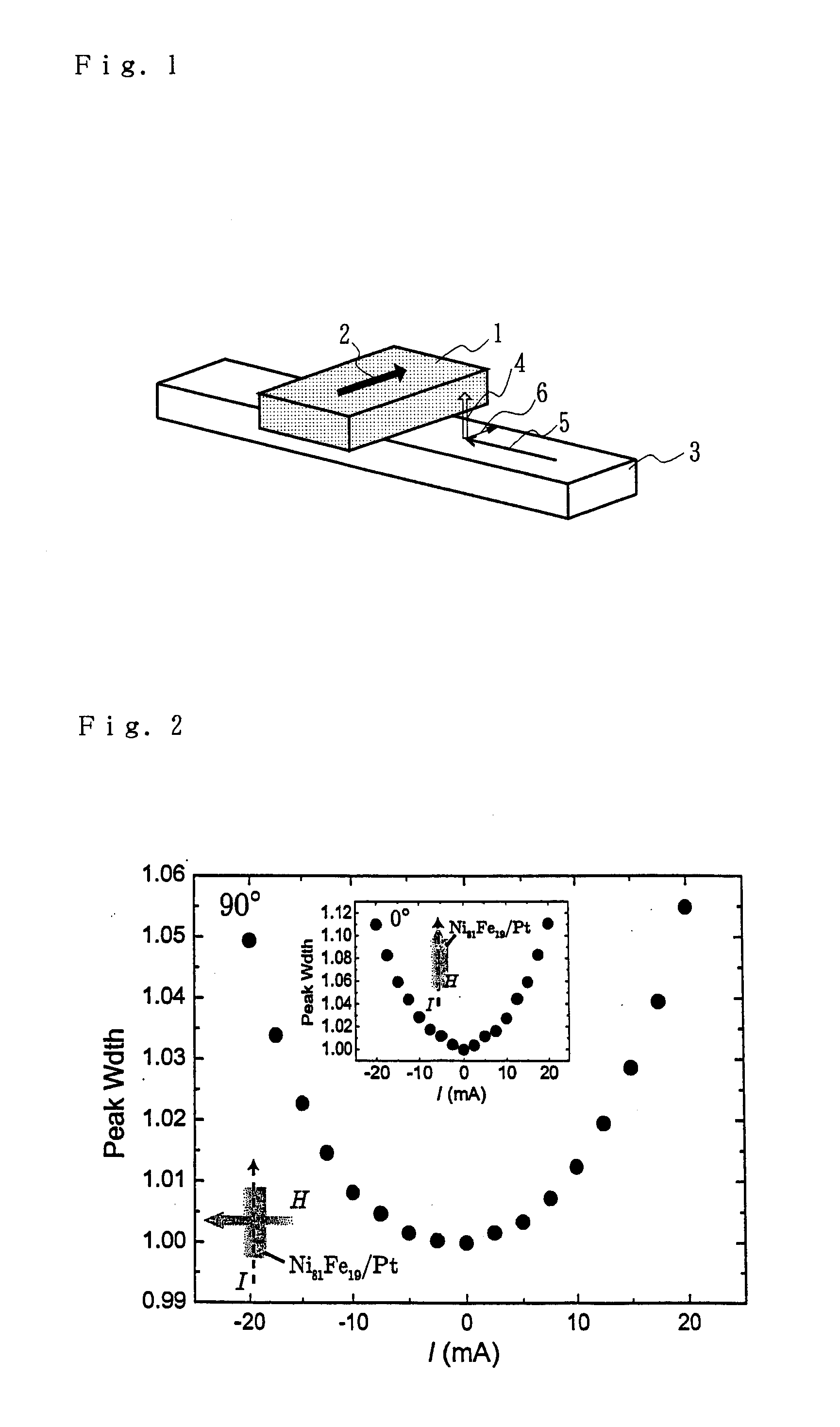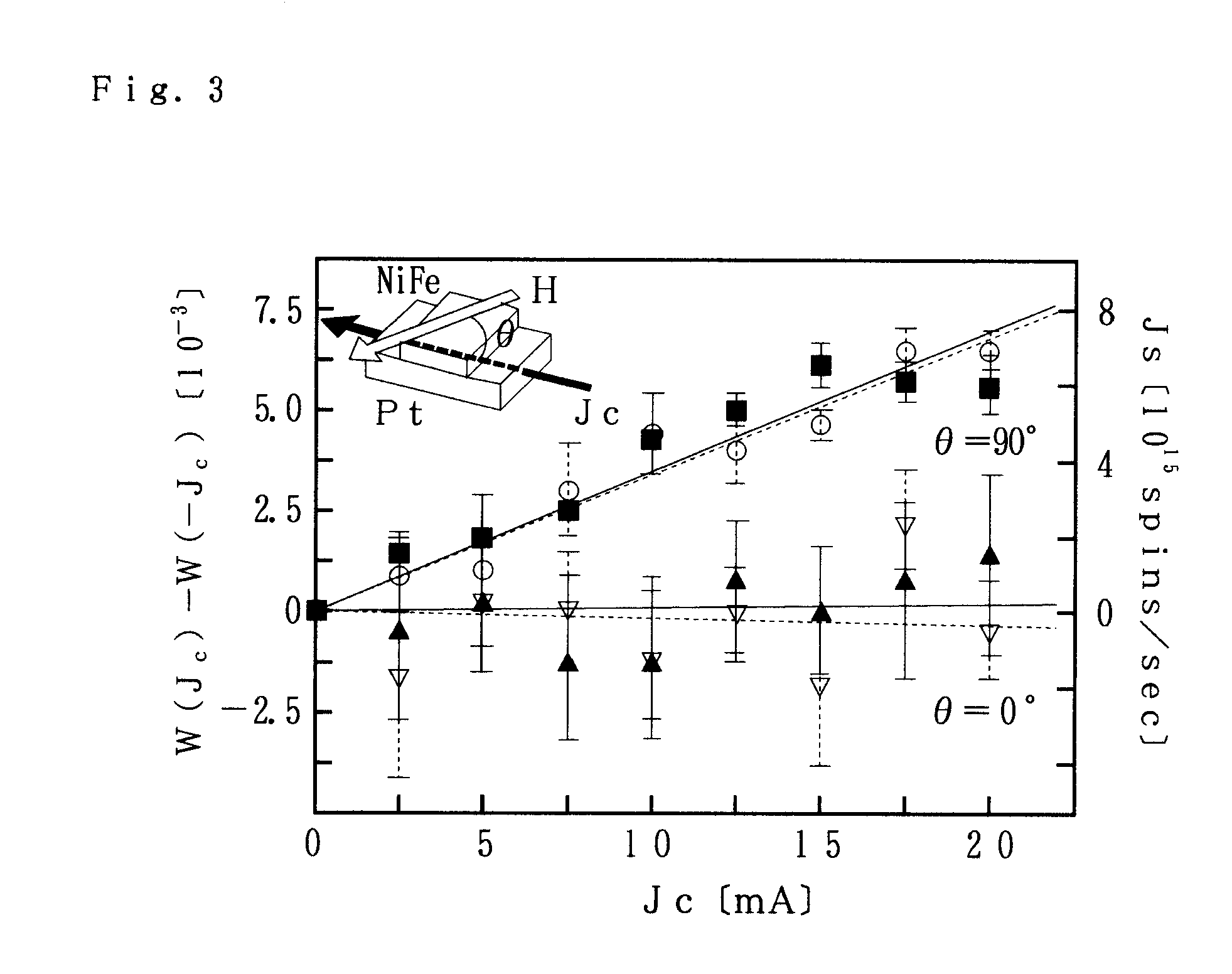Method for changing spin relaxation, method for detecting spin current and spintronics device using spin relaxation
a spin relaxation and spintronic technology, applied in the field of changing spin relaxation, can solve the problems of no means for controlling or changing write-in becomes difficult, etc., and achieves the effect of shortening the spin relaxation time, reducing the time for writing, and high efficiency
- Summary
- Abstract
- Description
- Claims
- Application Information
AI Technical Summary
Benefits of technology
Problems solved by technology
Method used
Image
Examples
example 1
[0119]Here, the improved spin RAM according to Example 1 of the present invention is described in reference to FIGS. 8 and 9.
[0120]FIG. 8
[0121]FIG. 8 is a conceptual cross sectional diagram showing the memory cell that forms the improved spin RAM according to Example 1 of the present invention, and the structure itself is exactly the same as that of conventional spin RAM's.
[0122]As shown in the figure, a p type silicon substrate 31 is selectively oxidized so that an element isolation oxide film 32 is formed, and after that, a gate electrode made of WSi which is to become a word line 34 is formed in the element formation region with a gate insulating film 33 in between. Then, the gate electrode is used as a mask, and ions, such as of As, are implanted, so that an n+ type drain region 35 and an n+ type source region 36 are formed. Here, FIG. 8 shows a conceptual structure, and therefore, detailed explanations for structures which do not directly relate to the technical idea, such as s...
example 2
[0134]Next, the magnetic field write-in type MRAM according to Example 2 of the present invention is described in reference to FIG. 10.
[0135]FIG. 10
[0136]FIG. 10 is a conceptual cross sectional diagram showing the memory cell that forms the magnetic field write-in type MRAM according to Example 2 of the present invention, and the structure itself is the same as that of conventional MRAM's with a spin injection electrode.
[0137]As shown in the figure, a p type silicon substrate 31 is selectively oxidized, as in the above Example 1, so that an element isolation oxide film 32 is formed, and after that, a gate electrode made of WSi which is to become a sense line 52 is formed in the element formation region with a gate insulating film 33 in between. Next, the gate electrode is used as a mask, and ions, such as of As, are implanted, so that an n+ type drain region 35 and an n+ type source region 36 are formed.
[0138]Next, a thick, first interlayer insulating film 37 is formed of a TEOS-NSG...
example 3
[0151]Next, the magnetic field write-in type MRAM according to Example 3 of the present invention is described in reference to FIG. 11, and Example 3 is gained by increasing the efficiency of pure spin injection in the magnetic field write-in type MRAM in the above Example 2.
[0152]FIGS. 11(a) and 11(b)
[0153]FIGS. 11(a) and 11(b) are schematic diagrams showing the configuration of the memory cell that forms the magnetic field write-in type MRAM according to Example 3 of the present invention, and the structure itself is the same as that of the MRAM in Example 1 with a word line for write-in.
[0154]Here, FIG. 11(a) is a schematic cross sectional diagram, and FIG. 11(b) is a schematic plan diagram showing the appearance of wires.
[0155]As shown in the figures, a p type silicon substrate 31 is selectively oxidized so that an element isolation oxide film 32 is formed, and after that, gate electrodes made of WSi which are to become a sense line 521 and a wire for injection 522 are formed in...
PUM
 Login to View More
Login to View More Abstract
Description
Claims
Application Information
 Login to View More
Login to View More - R&D
- Intellectual Property
- Life Sciences
- Materials
- Tech Scout
- Unparalleled Data Quality
- Higher Quality Content
- 60% Fewer Hallucinations
Browse by: Latest US Patents, China's latest patents, Technical Efficacy Thesaurus, Application Domain, Technology Topic, Popular Technical Reports.
© 2025 PatSnap. All rights reserved.Legal|Privacy policy|Modern Slavery Act Transparency Statement|Sitemap|About US| Contact US: help@patsnap.com



